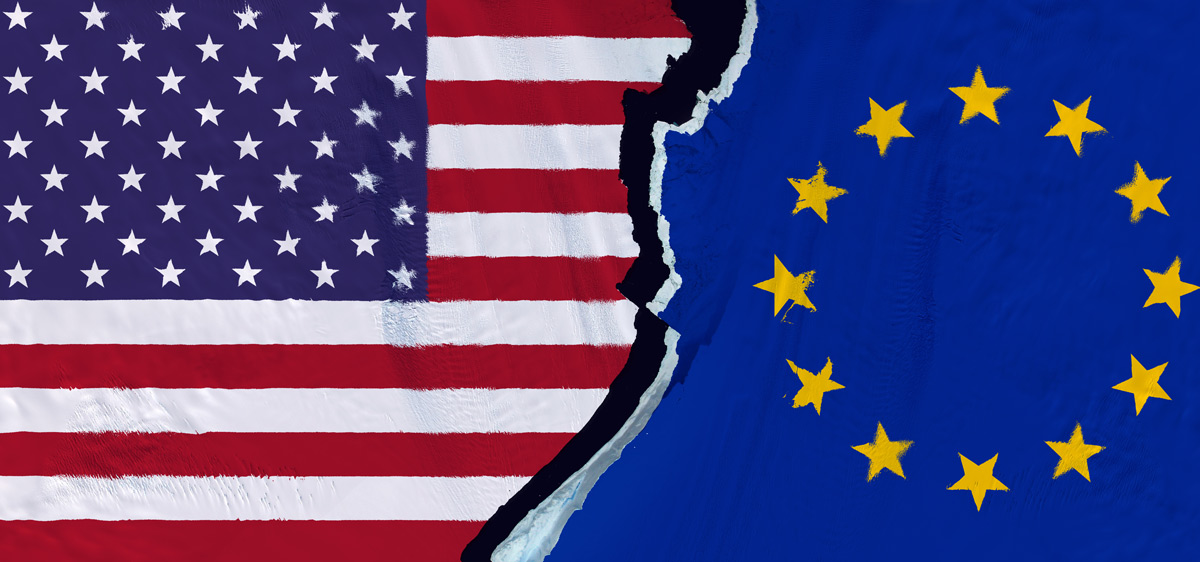You’ve undoubtedly heard the news that we dodged two massively concerning tariff-related bullets this January and February. There remains a great deal of misinformation in the market about tariffs in general – Let’s take a few minutes to review United States Tariff policy, where things currently stand, and what we can expect moving forward.
Let’s give huge props to those in our industry who took the time to stand up to current and proposed tariffs between October 2019 and February 2020. An astonishing 25,624 public comments were logged on the USTR Large Commercial Aircraft Tariff docket, and 3,761 on the USTR French DST Tariff Docket. We believe that loud uproar made all the difference here, and if you were part of the noise, thank you. Individually we would like to thank Jon Bonne for his far-reaching guest post via CNN, Harmon Skurnik for his terrific contribution in The Washington Post, Marvin Shanken for his aggressive work in using his reach to generate consumer uproar, and the two dozen industry leaders who spoke on everyone’s behalf at the actual USTR hearing this January: Jeff Zacharia (National Association of Wine Retailers), Richard Blau (Sokolin), William Tomaszewski (Wine.com), Benjamin Aneff (Tribeca Wine Merchants), David Waldenberg (BNP Distributing), Peter Weygandt (Weygandt-Metzler), Michelle DeFeo (Laurent-Perrier U.S.), Annette Peters (Bourget Imports), James Federico (VINTUS), Barkley Stuart (Southern-Glazers), Jenny Lefcourt (Jenny & Francois Selections), Philip Burkhart (Latitude Wines), Eric Faber (Cutting Edge Selections), Timothy Gagnon (Selection Massale), Michael Daniels (Vintage 59), Mary Taylor (Mary Taylor Wine), Christy Franc (Copake Wine Works), David Bowler (David Bowler Wine), Edward Swain (Devenish Wines), Geoffroy Ducroux (Avant Garde), Lyle Fass (Fass Selections), and Eben Lillie (Chambers Street Wine). If you have yet to read Alder Yarrow’s account of the hearing you ought to. It is well-worth your time.
THE SECTION 301 INVESTIGATION
What is the deal with an American President imposing tariffs anyway? Didn’t our school textbooks consider this a duty of Congress? Responsibility for tariffs was placed in the hands of Congress in 1779 via Article I of the U.S. Constitution. This responsibility remained with Congress until the Cold War era, when several statutes were passed, which in effect moved the responsibility of tariff and trade enforcement to the Executive Branch. The rationale for these changes being that in a new Cold War-era, most trade disputes were more closely related to national security than to commerce.
The two tariff threats that stressed all of us out this December-February came way via “Section 301 Investigation.” What exactly is a Section 301 Investigation you ask? The United States Trade Act of 1974 authorized the President of the United States to impose tariffs on a country if the United States Trade Representative (USTR) found that an “act, policy, or practice of a foreign country is unreasonable or discriminatory and burdens or restricts United States commerce.” This practice was used moderately between 1974 and 1994 (123 total Section 301 investigations if we want to be precise). The practice almost completely disappeared after 1994 thanks to the creation of the World Trade Organization, which was created as a “better” (and most importantly multilateral) solution for all involved in the new, post-Cold War era. President Trump famously came to office with a “different” approach to established institutions, including an aggressive and unilateral take on trade negotiation, unlike anything we’ve seen in U.S. history. The President has brought the practice of the “Section 301 Tariff ” back from the dead, with his first bomb being the Section 301 investigation that sparked the well-documented economic mess that is the US-China Trade War.
This is not a political post and I’m trying to stick to the facts. Do a bit of reading, and you’ll find that almost all economists agree that Trump’s use of Section 301 tariffs have harmed all economies involved. When you lump together the various tariffs the Trump Administration has imposed during the last 24 months, The Tax Foundation’s “Tariff Tracker” cites a significant GDP loss, decreased average wages, and 394,000 lost jobs. The United States Treasury released similar findings this January stating that while the U.S. economy has remained healthy, this is “in spite” of destructive tariff-driven U.S. trade policy. With such results, we now have various groups of Senators and Representatives working to amend the current Cold War-era trade statues that give President Trump to execute tariffs and tariff threats at will. If some of these proposed changes go through we could see an increased role for Congress overall in tariff-related matters, limits to the types of threats a president can reference as a justification of tariff implementation, a time limitation on the duration of any President-determined tariff schedule, and possibly full shifting of the responsibility of tariff imposition from the President to other parties (Congress and/or the Secretary of Defense).
TWO DODGED BULLETS
We’ve avoided immediate catastrophe on two fronts so far this year. Let’s start with the proposed “Up to 100% Tariff ” on all French Sparkling Wine. This was a hardline negotiating tactic Trump used to talk Emmanuel Macron into suspending the retroactive Digital Services Tax France unilaterally imposed in 2019 for implementation on January 1, 2020. There are interesting storylines and theories as to Trump’s strategy there, we’ve covered those in prior posts, and the bottom line is that an agreement made at the World Economic Forum in Davos this January means that both sides have kicked the issue to the curb until January 2021. In the meantime, the Organisation for Economic Cooperation and Development (OECD) will attempt to create a multilateral long term framework for the taxation of digital services in all developed countries. We are not holding our breath on a full resolution from the OECD between now and next January, as the issue is extremely complicated. By definition, any digital taxes imposed by individual countries or by a comprehensive OECD policy will disproportionately affect the U.S. based companies who control most of the globe’s digital landscape (Google, Apple, Facebook, and Amazon). Yes, we can think of this January Macron/Trump outcome as a temporary “win”, but know that this whole DST issue is an ugly beast due to make a return in the near future.
On Valentine’s Day we dodged the second big bullet of 2020, which was a potential restructuring of the tariffs imposed on wines from France, Germany, Spain, and the United Kingdom as reparations for the WTO decision that determined these four countries unfairly subsidized Airbus at the expense of Boeing. The USTR’s Section 301 Investigation found that Airbus subsidies had continued since the original WTO ruling, and the fear was that tariffs would expand to additional categories (all European countries, all alcohol levels, and formats, and up to 100%). In the end the USTR made little change to the tariff categories initially set in October 2019, with the most notable difference being a 5% tariff increase on aircraft parts imported from E.U. countries. In theory no further changes will be made to this tariff schedule until mid-August, which means that we can order with minimal fear of arbitrary tariffs coming into play during the transport time of EU-USA container vessels, which was the nightmare situation that resulted in a widespread stoppage to most EU-USA wine import activity from December through mid-February.
LOOMING THREATS
While it is nice to have some predictability, two threats loom on the horizon. First is Italy’s Digital Services Tax – This 3% tax went into effect on January 1 2020, and Trump has publicly denounced it as “no bounissimo,” saying that by definition any tax on digital services targets U.S. firms (the majority of Italy’s Digital Services revenues come through Google, Apple, Facebook, and Amazon). Whether this will escalate into a similar standoff to the one we witnessed between Trump and Macron is anyone’s guess, although at this point, we will assume that things are safe until January 2021.
The more provocative threat relates to a potential trade war escalation that could occur when the WTO releases final reparation settlement numbers to the European Union this May/June as a result of the second Airbus/Boeing case. This is the exact opposite case that spurred the tariffs awarded to the U.S. – It will almost certainly award similar tariff permissions to the E.U., as the United States illegally subsidized Boeing in the same capacity that the European Union subsidized Airbus. Should Trump take offense to E.U.’s actions on these tariffs, we may see the escalation of a real titfor- tat trade war on par with the 2017-present China debacle. With an election cycle in progress and as of this week plummeting global stock markets, we expect that the likely May/June tariff permissions awarded to the E.U. will mean a late 2020 settlement between both sides and the elimination of all Boeing/Airbus tariffs by early 2021.
MARKET CONSEQUENCES THUS FAR
As we detailed earlier, our direct import model has kept pricing reasonable for most of what we import, with our retail prices remaining below the pre-tariff national average for most wines in question. For some details on this please see our initial post from the grapex.com blog. Products handled through third-party importers have been much more of a challenge, we’ve discontinued a few dozen due to unacceptable proposed post-tariff price levels, and this will continue to be an issue if tariffs drag on. We guess that folks who function solely in the “importer” trade will cut down on employees to establish a leaner margin model.
We’ve experienced a large amount of growth with customers looking for compressed margin solutions, and our post-tariff sales figures are significantly up versus the same period last year, especially so for our Washington, Oregon, and California 3PL arm.
Some of us predicted a spike in non-tariff categories – We have not experienced action on this front, probably due to the efficient direct pricing structure mentioned above, but also because there are few actual substitutes for the impacted categories – New Zealand Sauvignon Blanc does not replace Sancerre, Oregon Gamay is still overpriced versus tariffed Cru Beaujolais, and nothing from the New World seems to beat $10-$15 tariffed Sur Lie Muscadet as a mineral-driven oyster companion.
The biggest issue for us at Grape this far was our decision to suspend shipments from the time of the December 6th announcement of possible tariffs and the February 14 resolution. We now have a backlog of containers on the water, and you can expect some short inventory gaps in staples like O+T Sauvignon, Fevre Fevre Chablis, Bonnamy Rosé, and Bag in Box Lumieres Cotes du Rhone.
Overall most of you on the “buyer” side would agree that there has been an oversupply of SKU’s in market. Buyers will see a thinner selection in terms of availability in 2020/2021. Smaller importers and distributors will be foreced to close (more than a few will be unable to handle the cash flow burden of 25% tariffs, which are due upon arrival in port rather than at 90 or 120 day terms as is customary with actual invoices on imported wine). We expect surviving distributors to act similarly to us in discontinuing, for example, that $17 pre-tariff third-party-sourced Cahors, which is now $22 and just outside of an acceptable price range.
These unilateral tariffs amount to a tax on every layer of our trade. They are paid by French producers, who are almost universally giving their U.S. importers and distributors a 10% discount to help combat tariffs. They are paid by American importers/distributors, all of whom are sacrificing margin as well. They are paid by American consumers, who, despite the sacrifices of the channels mentioned above, end up spending on average $2-$4/bottle more for the same bottle of impacted wine than they did this Fall. As we’ve stated on this platform previously, here is to a timely resolution of these unusual and mutually destructive disputes.


